Last Updated on December 11, 2025 by Emma Fajcz | Published: June 18, 2021
Apple pie is to America what the tortilla de patatas is to Spain—a national culinary icon. While paella and gazpacho may have more international recognition, ask any Spaniard what dish best sums up the essence of all things Spanish and they will, without a doubt, say tortilla.
But what is a Spanish omelet, anyway? Does it have anything to do with Mexican tortillas? Where does it come from, and how do Spaniards enjoy it today?
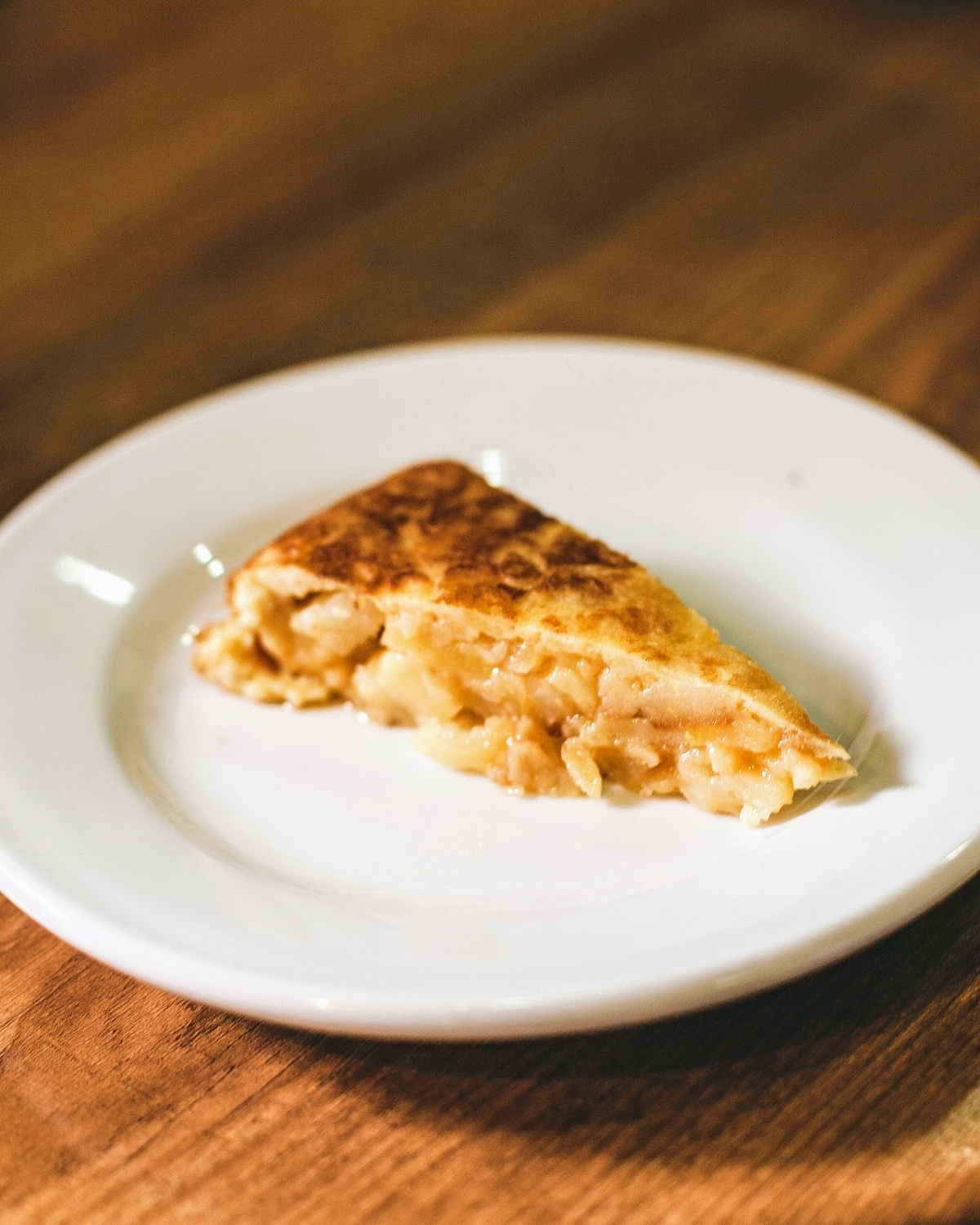
Tortilla de patatas, also known as tortilla española, tortilla, or in English as Spanish omelet, is a staple in the kitchen of any Spanish home cook. Each household has their go-to recipe: some prefer their tortilla runny, while others like it cooked through.
But how did this humble potato omelet become such a beloved fixture of national cuisine? Read on to discover what a Spanish omelet is, where it comes from, and how to eat one like a local.
What Is a Spanish Omelet?
First things first: Don’t confuse tortilla española with Mexican flour or corn tortillas. Although the word may be the same, the concept could not be more different!
The truth is that Spanish tortilla has nothing to do with Mexican tortillas. If anything, it bears more resemblance to the Italian frittata than to anything Latin American.
The word tortilla is the diminutive of the Spanish torta, which means “cake.” In the case of the Spanish omelet, you could say that its layers of sliced or cubed potatoes give it the thickness of a small cake.
Unlike cake, though, this simple dish of eggs, potatoes and (occasionally) onions is a meal in itself. In fact, that’s the whole point. Tortilla de patatas came about as a healthy, cheap and easy way of feeding the masses.
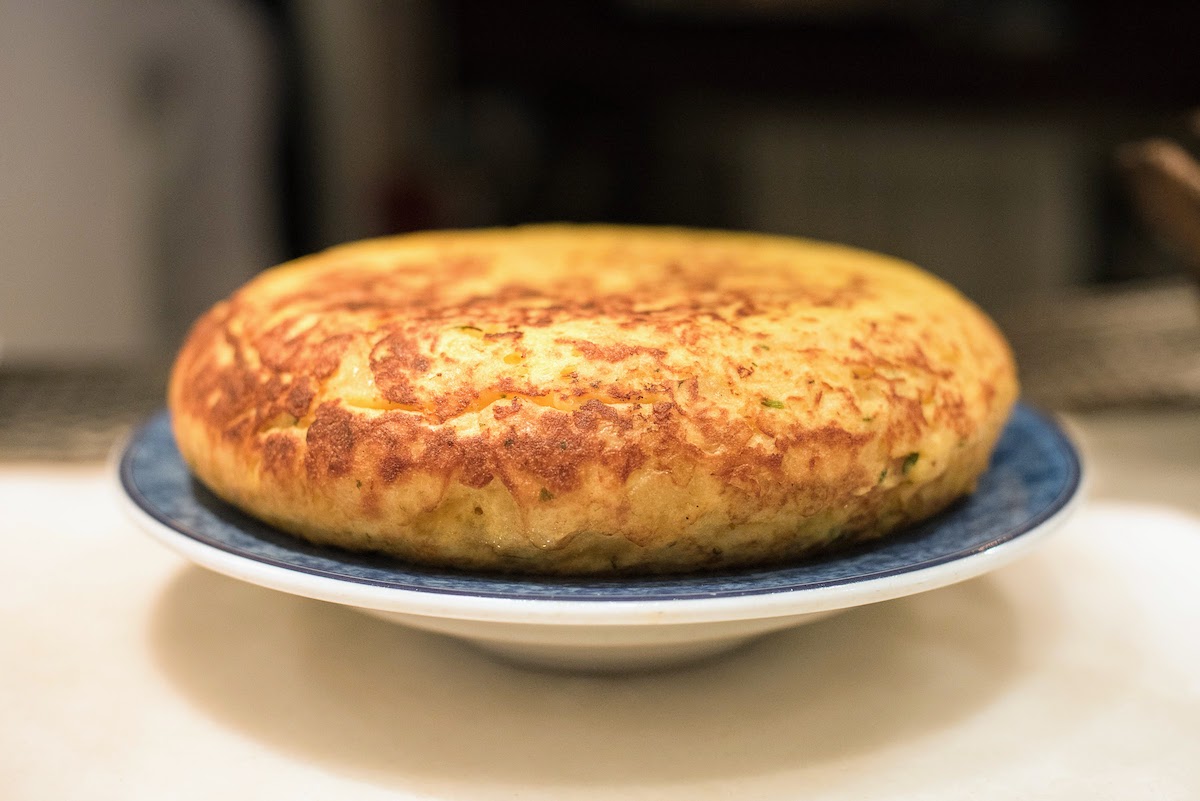
History of Tortilla de Patatas
It may be surprising to discover that one of the main ingredients of a Spanish omelet—potatoes—isn’t actually native to Spain at all. In the 15th century, Spanish explorers brought the first potatoes to Europe from South America. Spaniards regarded the strange new crop warily at first, often relegating it to the status of a poor man’s food or even using it as feed for livestock.
It took more than 200 years for potatoes to become an everyday staple of Spanish cuisine. People likely started preparing primitive tortillas not long after. Spanish texts from the mid- to late 18th century describe potatoes as a useful ingredient in “stews and omelets.”
The small village of Villanueva de la Serena in the western Spanish region of Extremadura often gets the credit for popularizing the version of Spanish omelet we know and love today. Multiple documents from the area dating back to 1798 mention the dish as a cheap and easy way of feeding the masses.
In June 2021, Villanueva de la Serena immortalized its unique and delicious claim to fame with a giant concrete sculpture of a slice of tortilla, from which a metal fork extends some 15 feet into the air. The town inaugurated the sculpture as part of its annual Spanish omelet festival.

How to Make a Spanish Omelet
Today, Spaniards’ love of tortilla knows no bounds. People eat it in all corners of the country and at all meals. It’s comfort food—plain and simple—the type no one makes better than your grandmother.
We’re willing to be that you already have all the ingredients for a classic tortilla de patatas recipe in your kitchen right now. All you need are potatoes, eggs, olive oil, salt, and (if you prefer) onions—a controversial ingredient even among Spaniards!
The only thing simpler than the ingredients list for Spanish omelet is its preparation. Yet, somehow, no two tortillas taste alike. Family members pass down recipes through generations, but there are a few basic rules that are the same across the board.
Rule number 1: Always use a good quality olive oil. This is arguably the most important ingredient in a Spanish omelet, and we’re not kidding when we say that it can make or break the final result. And any Spanish grandmother with decades of tortilla-making experience under her belt will teach you not to add the potatoes until the oil is good and sizzling, to caramelize the onions to perfection, to expertly beat the eggs, and to flip the tortilla without fear.
The moment of truth comes when the bottom of the tortilla has cooked thoroughly enough to attempt to flip it—in itself an art form. With the frying pan held in one hand and a very large plate (the larger the better) in the other, you give just a flick of the wrist and plop! Tortilla meets plate (and occasionally floor, if you’re unlucky).
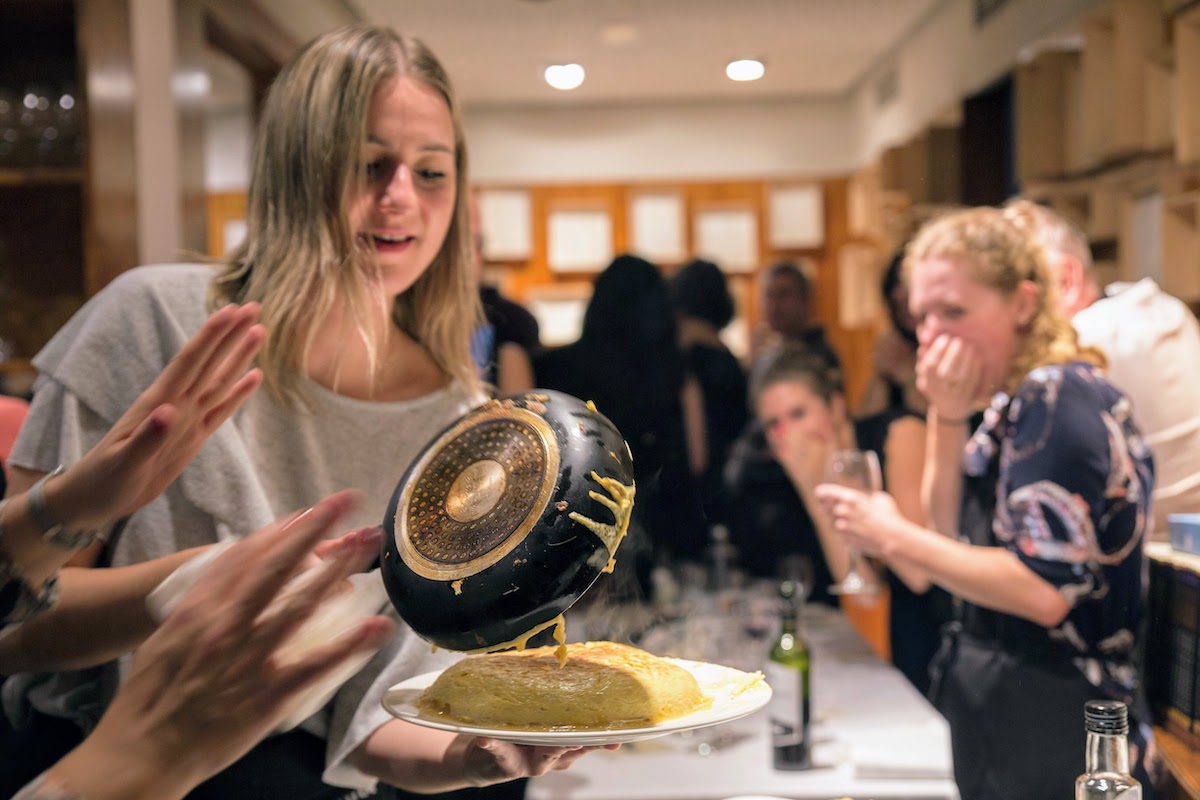
With or Without Onion?
Now back to that single controversial addition: onion. Who knew one little ingredient could cause such a fuss?
In Spain, there is no topic more controversial than that of whether to use onion in your tortilla or not. The diehard purists, the sin cebollistas (the without onion-ers), insist a true tortilla is pure eggs and potatoes. Nothing more, nothing less.
On the other hand, cebollistas (the pro onion-ers) argue the contrary: Onions help round out the flavor of the Spanish omelet. The radicals take it a step further, adding not just onion, but Spanish peppers, tuna, chorizo, eggplants—you name it!

Modern Interpretations
If tortilla was born in Extremadura, then it finally came of age in Catalonia. Chef Ferran Adrià of the world-famous El Bulli restaurant revolutionized this classic dish when he created the deconstructed Spanish omelette. Adrià pioneered this new style of cooking, one which reduces a dish down to only its elements, while maintaining all of its flavor.
For Adrià’s tortilla de patatas, he first reduces the classic tortilla to just its essence: eggs, potatoes and onions. He then cooks them separately. The finished deconstructed product is one-part potato foam (food-foaming being another one of Adrià’s inventions), one-part onion pureé and one-part egg-white zabaione, served layered one on top of the other in a sherry glass, with potato crumbs added as garnish.
Adrià’s version of this classic dish breaks completely with tradition to great effect. Unfortunately, El Bulli closed in 2011 so, for now, the deconstructed tortilla de patatas will have to wait.
Thankfully, Adrià isn’t the only one shaking things up. One of the latest and most creative variations on the tortilla is made right here in Madrid!
At Tortillas de Gabino, they replace potatoes in one of the tortillas on their menu with….drumroll please…potato chips! Tortilla with a crunch! It’s the perfect marriage of old and new, and the perfect Spanish omelet for the modern age.
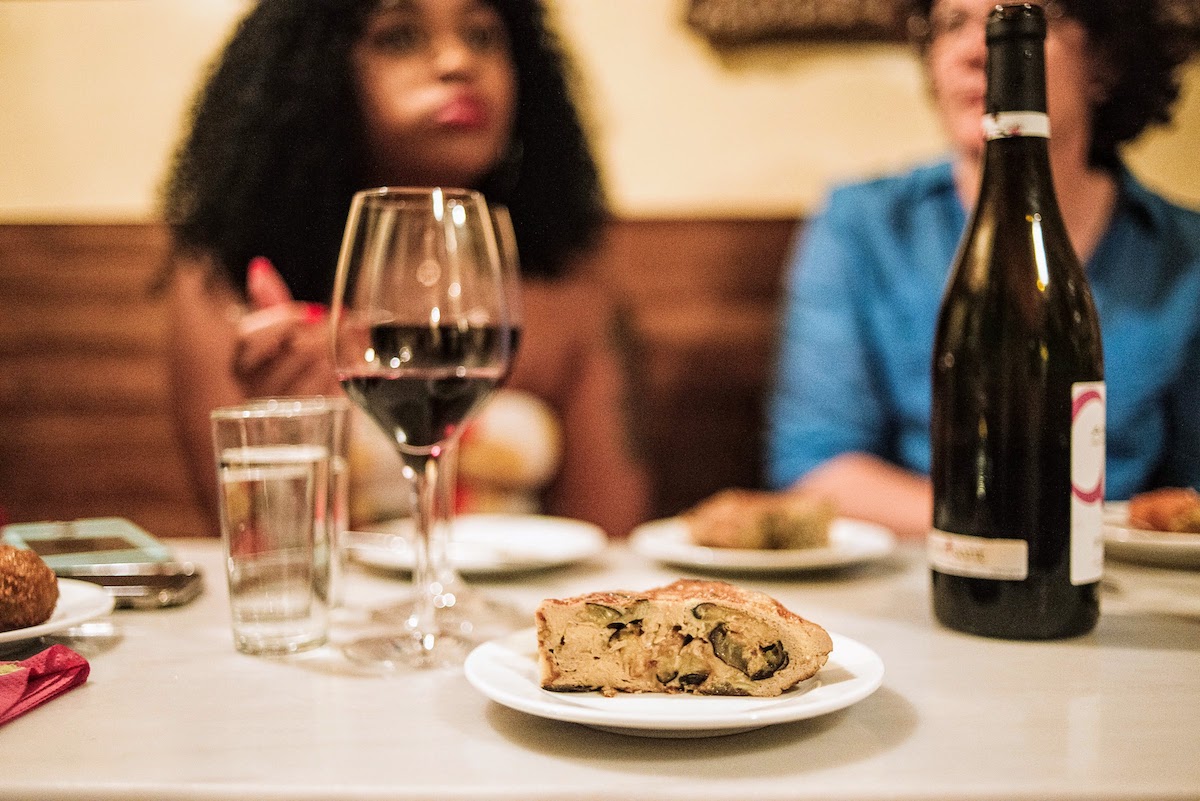
How to Eat a Spanish Omelet
Today, tortilla de patatas is a staple of local cuisine in Madrid, and it’s hard to find a bar or restaurant in the capital that doesn’t serve this Spanish classic. That said, there are definitely some places that do it better than others. Be sure to check out our guide to the best tortillas in Madrid if you’re craving Spanish omelet!
And of course, as with all Spanish dining experiences, there are a couple of unwritten rules regarding how to eat tortilla. Here are a few pointers that will help you enjoy it like a local.
When is Tortilla de Patatas Eaten?
The beauty of Spanish omelet is that it’s one of those rare foods that can be enjoyed just about whenever!
In Madrid and much of northern Spain, it’s common to start your day with a pincho de tortilla for breakfast. It can be eaten on top of a slice of toasted bread or on its own. This is pretty much the only occasion where you’ll find an egg-based dish served for breakfast in Spain!
Spanish omelet can also be the main event at a meal, or a side dish. In the south of Spain, it’s a common accompaniment to salmorejo for lunch. Tortilla on its own is also a great option for a light dinner.
And like many of the best Spanish foods, you can also enjoy tortilla in sandwich form. A bocadillo de tortilla is a hearty sandwich consisting of a wedge of Spanish omelet sandwiched between two slices of crusty baguette.
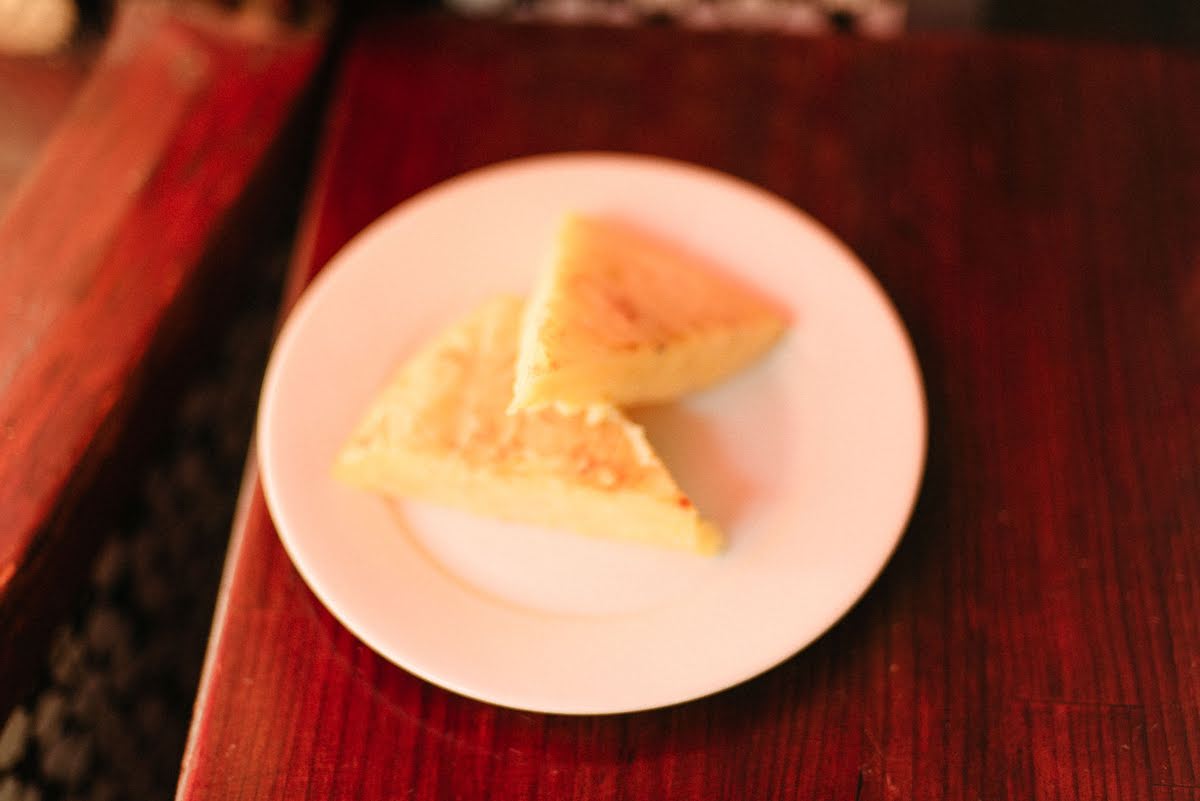
What to Eat with Tortilla de Patatas
If you’re enjoying tortilla de patatas as part of a tapas-style feast, your options for accompanying dishes are pretty much endless. As one of the cornerstones of Spanish cuisine, potato omelet goes well with almost anything.
A few foolproof dishes to enjoy with Spanish omelet are:
- Gambas al ajillo (garlicky shrimp)
- Ham croquettes (or any kind of croquettes!)
- Flash-friend padrón peppers
- Pan con tomate, Catalonia’s ubiquitous tomato toast
- Cold soups like salmorejo or gazpacho
Spanish Omelet FAQs
Yes—but not the ones you may be thinking of. Rather than the thin wheat- or corn-based flatbread popular in Mexico, a tortilla in Spain is an omelet. The most common is the tortilla de patatas, or potato omelet.
In Spain, tortilla refers to an omelet. There are many different versions, with the only required ingredient being beaten eggs. The most common form of omelet eaten in Spain uses potatoes: the tortilla de patatas.
On the other hand, Mexican tortillas are flatbreads traditionally made with corn, though wheat is also used in some regions. They are often a base for other ingredients, such as in tacos.
Both Spanish omelets and American omelets use beaten eggs as a base. In the United States, the eggs are usually cooked on their own without stirring before being folded over the fillings, which can include meats, cheeses, vegetables, herbs, and more. A Spanish omelet, on the other hand, is made with fried potatoes (and occasionally caramelized onions) that are incorporated directly into the beaten egg mixture to cook the finished omelet.
Freezing tortilla de patatas is not recommended. Cooked potatoes don’t freeze well and the texture of the dish will be compromised upon thawing.
Spanish omelet is generally nice and filling without being too heavy (though that also depends on how much of it you eat!). It’s a great option for just about any meal of the day that will fill you up without weighing you down.









Hello
I saw in one of your programs that you guys went to have a pincho de tortilla that lloked very good.
The owner of the location name Carlos. Small place. But no address given. I am loking for a tortilla like that, simple, moist inside, tasty.
Can you please give me the name of location and address.
Thanks
Raul
Bar Cerveriz! https://goo.gl/maps/M1yse7rrZik Enjoy 🙂
Wow! Really an interesting article. I’ve never seen a tortilla this fat Lol…
When we lived in Madrid I was lucky enough to be only a few blocks away from Casa Dani. Once a week I would buy a full tortilla and keep it at home for snacking. now that I am back in the US, I am craving Casa Dani’s tortilla! Wondering if I could get my hands on a recipe/tutorial for this particular version?
This is definitely an understandable problem to have! We’ve done some digging and couldn’t uncover the actual recipe, but according to this article: https://www.codigounico.com/placeres/gastronomia/tortilla-de-patatas-receta-mejor-espana.html the secret lies in using Agria potatoes, caramelizing the onion, using sunflower oil and letting it cook over a gas flame for about 8 minutes to get it nice and gooey in the middle. Let us know how it turns out!